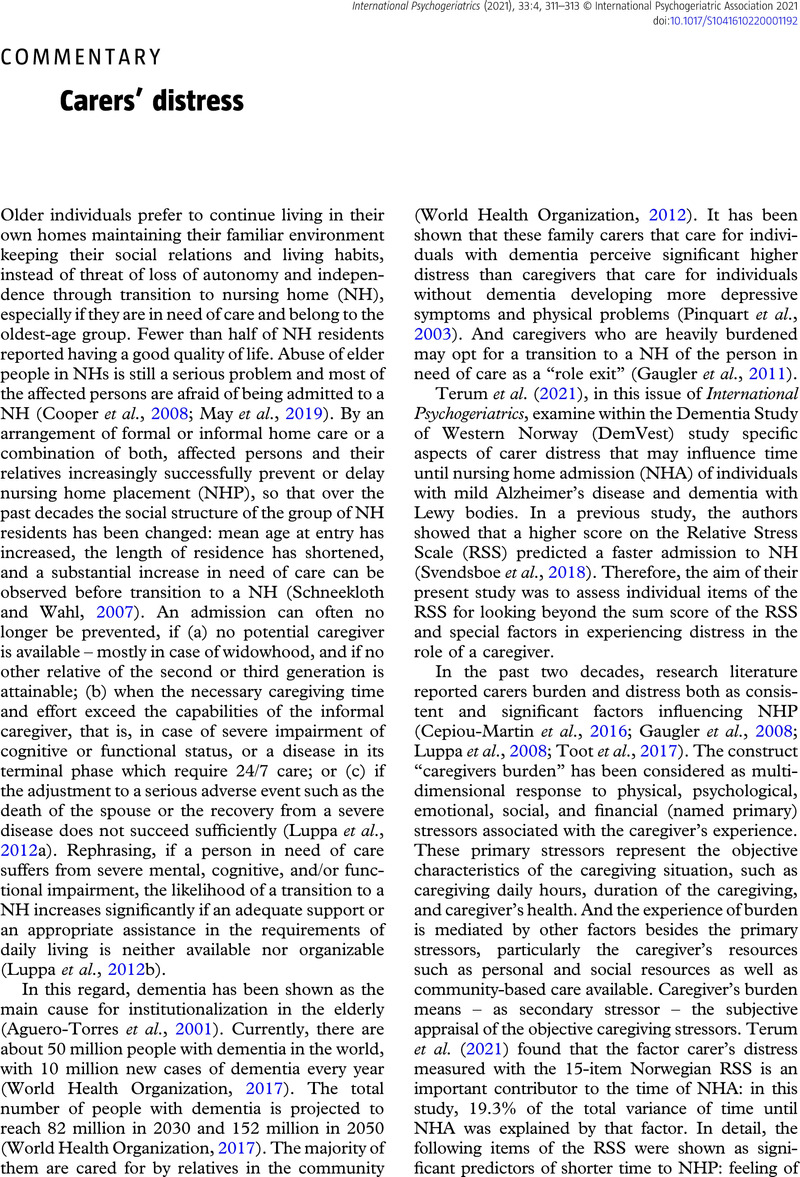Crossref Citations
This article has been cited by the following publications. This list is generated based on data provided by Crossref.
Tokovska, Miroslava
and
Šolcová, Jana
2022.
The Burden of Next-of-Kin Carers of Dementia Sufferers in the Home Environment.
Healthcare,
Vol. 10,
Issue. 12,
p.
2441.





